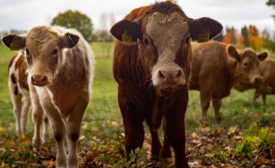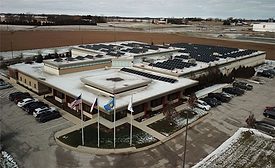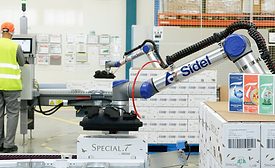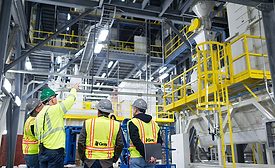Wayne Labs
Wayne Labs has more than 30 years of editorial experience in industrial automation. He served as senior technical editor for I&CS/Control Solutions magazine for 18 years where he covered software, control system hardware and sensors/transmitters. Labs ran his own consulting business and contributed feature articles to Electronic Design, Control, Control Design, Industrial Networking and Food Engineering magazines. Before joining Food Engineering, he served as a senior technical editor for Omega Engineering Inc. Labs also worked in wireless systems and served as a field engineer for GE’s Mobile Communications Division and as a systems engineer for Bucks County Emergency Services. In addition to writing technical feature articles, Wayne covers FE’s Engineering R&D section.
Senior Contributing Technical Editor
ARTICLES
Legal Issues
$220 million settlement stems from lawsuit alleging a conspiracy to reduce milk output and raise prices on dairy products
Read More
Engineering R&D
Novel compressed air drying system leaves out the desiccant
January 22, 2020
Tech Update
Employing wireless sensors without a clear goal could prove inefficient
January 22, 2020
IIOT Communications
IIOT sensor communications issues still need work
NIST’s Nenad Ivezic provides a more detailed view of the progress made in standardizing data communications in the food supply chain—including sensors and IIoT at the farm and industrial levels
January 17, 2020
Energy savings
Packaging machine company turns toward the sun
Solar power helps Viking Masek save some big bucks
January 9, 2020
Robotics
Palletizing cobots handle tea, ease workload
Nestlé needed a robust, precise and user-friendly cobotic solution—one that could handle pallet stability.
December 17, 2019
Pet Food
Expectations for conveniently packaged specialty pet food create challenges
December 16, 2019
Pet Food Series
Tomorrow’s pet food plant: What it takes to stay competitive
Plants of the future will rely on automation to produce consistent safe quality pet foods
December 13, 2019
Elevate your expertise in food engineering with unparalleled insights and connections.
Get the latest industry updates tailored your way.
JOIN TODAY!Copyright ©2024. All Rights Reserved BNP Media.
Design, CMS, Hosting & Web Development :: ePublishing









